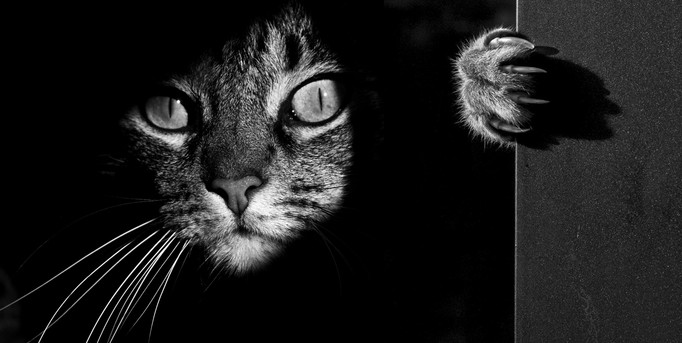Merhaba Ben Kapitalizm!
Küçük kızlarınızı Barbie Bebeklerle büyüttüm, bugün sizden estetik operasyon için para istiyorlar diye neden şaşırıyorsunuz!
Çıkarlarım uğruna kocaman bir moda endüstrisi yarattım!
İstediğimi de elde ettim, 17 yaşındaki kızların çoğu dış görünüşlerinden rahatsız.
Ben Kapitalizmim! Bir kadının bir moda dergisini 15 dakika karıştırması kendi vücudunu beğenmemesine yetiyor!
Ben Kapitalizmim ve bakış açınızı öyle bir değiştirdim ki, hırsız bir CEO'nun hayat hikayesi sizin için "azim ve başarı hikayesi" olabiliyor.
Ben Kapitalizmim ve ortalama bir insanın günde 5.5 saat TV izlediği, kitap okumadığı, tiyatro ve sinemaya çok az gittiği bir toplumda alaşağı edilmek gibi bir kaygım yok!
Ben Kapitalizmim ve Steve Jobs tabii ki çok önemli biriydi, ancak %1'inizin ihtiyacı olan makineleri 3. Dünya Ülkelerinde, ucuz işçilerle üretmekte çok başarılıydı..
Elbette bütün kapitalistler birer "aziz" gibi konuşacaklar, tıpkı Bill Gates gibi, 150 milyon dolarlık 66.000 m2 bir evde yaşayan bir aziz!
Ben Kapitalizmim ve benim yüzümden ortalık miras kavgaları yüzünden kanlı bıçaklı olmuş akrabalarla dolu.
Her yıl 20 milyon çocuk açlıktan ölürken siz bir koşu bandının üstünde fazla yağlarınızı eritmek için ter döküyorsunuz!
Ben Kapitalizmim ve benim yüzümden dünyada 600 milyon obez ve 1.4 milyar aç insan var!
Ben Kapitalizmim ve Starbucks için kahve üreten bir çiftçinin oradan bir bardak kahve satın alabilmesi için 3 gün çalışması gerek!
Ben Kapitalizmim ve Uzak Doğu'da 6-12 yaş arası kızlar 200$ gibi komik bir paralarla seks kölesi olarak satılıyorlar.
Ben Kapitalizmim ve "serbest piyasa ekonomisi" dünyanın en büyük yalanı.
Ben Kapitalizmim ve Amerikalıların % 24'ü eğer milyarder olmaları için bütün ailelerini reddetmeleri gerekecekse, bunu yapabileceklerini söylüyor.
Ben Kapitalizmim ve kadınlara sesleniyorum! Lütfen birer obje haline geldiğinizi aklınıza getirmeden Victoria's Secret'a koşun.
Victoria's Secret ülkelerine Türkiye de eklendi, avuç içi kadar çamaşıra 80$ verince çok mutlu olacağınızı garanti ediyorum!
Ben Kapitalizmim ve 15 yaşındaki bir çocuğun iPad alabilmek için böbreğini sattığını duyunca zevkten dört köşe oldum!
Ben Kapitalizmim ve Madonna'nın sadece Londra'da 8 evi var, ortalama 600 evsize barınak olabilecek büyüklükte.
Ben Kapitalizmim ve Tayland'da Disney fabrikası için çalışan bir çocuğun Disneyland'e girecek parayı çıkarması için 55 gün çalışması gerek.
Afrika kıtası dünyanın altın rezervlerinin % 90'ını elinde bulundurmasına rağmen, dünyada sadece 4 tane Afrikalı milyarder var.
Ben Kapitalizmim ve Afrika kıtasından her sene 8.5 milyar $ değerinde pırlanta çıkıyor, kıtanın açlık sorununu çözmeye yetecek miktar...
Ben Kapitalizmim ve siz pırlantalara bayılırsınız, Hindistan'da 1 milyon kişi günde 1.2 dolar kazanarak o pırlantaları üretiyorlar.
Dünyayı sarışın kadınların güzel olduğuna inandırdım, bu yüzden Asya kıtasında 300 milyon kadın düzenli olarak beyazlatıcı sabun kullanıyor.
Ben Kapitalizmim ve sizin hayatlarına özendiğiniz Hollywood yıldızlarının % 64'ü kokain bağımlısı.
Ben Kapitalizmim ve yılda 20 milyon çocuk açlıktan ölürken siz aynı tişörtü haftada iki kez giymeye utanıyorsunuz.
Ben Kapitalizmim ve siz hangi tanrıdan bahsediyorsunuz, artık farkına varın, taptığınız tek tanrı benim!
Ben Kapitalizmim ve siz hangi tanrıdan bahsediyorsunuz, Müslümanlar 5 yıldızlı Kabe manzaralı otellerinde, "ibadet" ederlerken?
Ben Kapitalizmim ve siz hangi tanrıdan bahsediyorsunuz, bütün dünya Hıristiyan bayramı Noel'i sırf alışveriş yapıp eğlenmek için "kutlarken"?
ABD'de 7 milyon evsiz insanın olduğundan kimsenin haberi yok çünkü TV'de gördüğünüz Amerikalıların hepsi havuzlu villalarda yaşıyorlar.
Ben Kapitalizmim ve yine başardım! Bütün kadınları dolapları tıka basa dolu olduğu halde giyecek hiçbir şeyleri olmadığına inandırdım.
Dünya nüfusunun % 50'si dünya kaynaklarının ve zenginliklerinin % 1'ine sahip.
Dünya nüfusunun % 1'i dünya kaynaklarının ve zenginliklerinin % 50'sine sahip.
Ben Kapitalizmim ve bankacılar benim evlatlarım.
Amerikalıların % 85'i eğer ekonomik durumlarını iyileştirebilecekse faşist bir hükümeti seçebileceklerini söylüyor. İşte bu kapitalin gücü!




















































